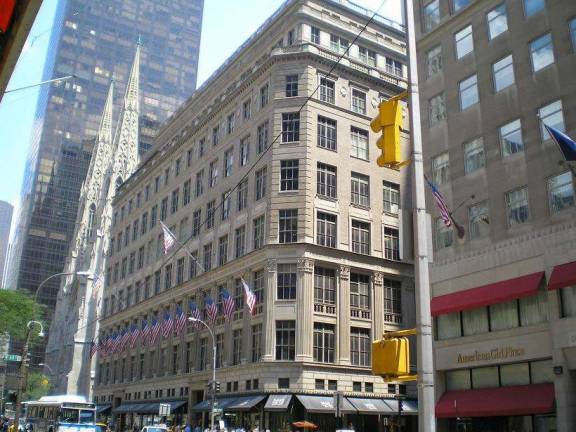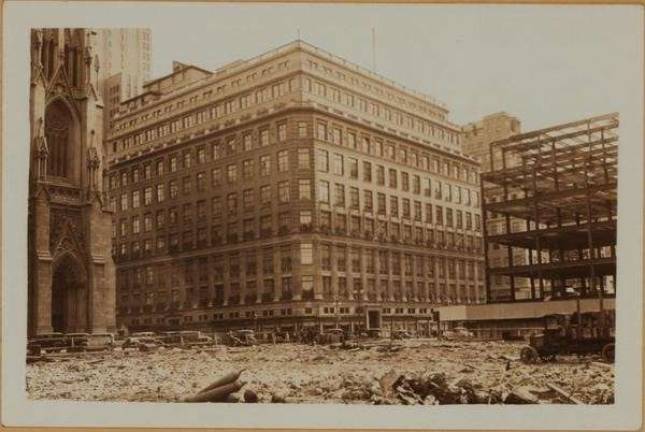BATTLING FOR THE SOUL OF SAKS


Saks Fifth Avenue doesn’t need to be on Fifth Avenue. It should shrink its footprint. Or put the trophy property up for sale, reaping billions. Retail is so passé. Brick-and-mortar? So 20th century. Real estate is king.
Sound preposterous? That’s only the beginning. Why not repurpose the icon as a hotel or office? Its top floors could be redeveloped as palatial condominiums. Its lower floors could host boutiques for the mega-rich.`This isn’t a joke: Those proposals are being advanced by a hedge fund that holds a 4.3 percent stake in the parent company of Saks, which has symbolized Fifth Avenue class since the day it opened its doors in 1924.
Clearly, Saks Fifth Avenue emblemizes something very different for the activist investor Jonathan Litt — and it isn’t the latest from Givenchy or Jimmy Choo, or the $4,600 Gucci “power bag” from the “Saks It List.”
Litt, founder of Land & Buildings Investment Management LLC, argues that there’s “substantial untapped real estate value embedded” in the property holdings of Saks’ Canadian owner, Hudson’s Bay Company.
How to “unlock” said value? “Aggressively move to monetize and redevelop” such “irreplaceable crown jewel locations” as the Fifth Avenue flagship, he says. In other words: Cash out.
Now, it might be a tad unkind to recall the Oscar Wilde riposte about the “man who knows the price of everything and the value of nothing.” And never mind that if you spin off a crown jewel, you have, in fact, “replaced” it.
Also worth noting: The department store was designated a landmark in 1984. “A handsome, but restrained and dignified neo-Renaissance style retail palazzo,” the Landmarks Preservation Commission found. “It still lends grace and dignity to the city’s most famous avenue.”
That means the 10-story building can’t be demolished, though it could be reconfigured, with LPC permission, which wouldn’t be easily obtained.
Still, like it or not, Litt is making an argument that, should he prevail, would have an outsize impact on the streetscape and view corridors of Fifth Avenue’s central monumental grouping, which includes Saks and St. Patrick’s Cathedral to the east, Rockefeller Center to the west.
For that reason alone, he’s worth listening to. A real estate strategist who founded Connecticut-based Land & Buildings in 2008, Litt on June 19 fired off a letter to the board of Toronto-based Hudson’s Bay that pulled no punches.
Noting that Saks occupies “one of the most valuable locations not only in Manhattan, but in the U.S.,” he asked, “Is the best use truly a department store? What about a hotel? Or office? Or boutique retail stores, the likes of Apple and Gucci?
“Or an Internet retailer looking to go upscale through a bricks-and-mortar presence, as Amazon appears to be doing with its purchase of Whole Foods? The point is that with real estate this valuable, there are myriad options for value creation, all of which must be explored.”
On July 31, Litt dashed off another missive, this time to company shareholders, arguing, “A 650,000-square-foot department store is likely not the highest and best use of the real estate at one of the best locations in the U.S.
“Adding boutique retailers on the first three floors, redeveloping the upper floors to high-end residential condos with terraces and extraordinary views of Rockefeller Center, St. Patrick’s Cathedral and Central Park ... and shrinking the department store footprint would likely help maximize value,” he wrote.
What to make of all this? Try asking New Yorkers a simple question: Should Saks be “monetized”?
“Don’t you dare,” said Doris Hoover, who declines to give her age but says the first time she shopped at Saks was after her college graduation in 1951. Last week, she came back, to pick up a pair of shoes.
“I celebrated my marriage, my first job, and my first apartment on 54th Street by shopping at Saks,” she added. “I still try to go once every couple of years, and all I can say is, ‘Don’t try to take it away from us!’”
State Senator Brad Hoylman, whose district includes Saks, had equally strong views. “It would be the bastardization of an icon,” he said. “The idea of some hedge-fund guy coming in and putting luxury condos into Saks is appalling.”
Saks has been around for nearly a century, its history is intertwined with the city’s, it’s a magnet for tourists and shoppers, contributes significantly to the New York economy, and provides good jobs on the store’s floor to a unionized work force, Hoylman said.
“This would put jobs on the chopping block,” he added. “Every New Yorker should be concerned with the consequences of such short-term investing.” It’s based “solely on trying to make a quick buck,” and Hudson’s should reject it, he said.
Let’s not forget the resonance of the department store’s name, said Simeon Bankoff, executive director of the advocacy group Historic Districts Council.
“This is Saks Fifth Avenue,” he said, emphasizing the address. “Do words mean nothing?”
A condo-ization or hotel conversion is “certainly the dumbest idea I’ve heard” all week, he added. “Monetizing a property by wringing all the value out of it, then abandoning it, is kind of a crummy, short-sighted thing to do.”
And it’s bad timing, too, because, “The effect of the presidency on Fifth Avenue is still being felt in that the area around Trump Tower is a dead zone,” Bankoff said.
A Saks spokeswoman didn’t respond to a request for comment.
“We welcome feedback from all of the company’s shareholders, and look forward to continued dialogue with Land & Buildings,” Hudson’s Bay said in a July 31 statement. “We are committed to our strategy of operating leading retail banners, and creatively unlocking the value of our associated real estate holdings.”
There is a precedent for shutting down a prominent Manhattan department store and redeveloping its real estate, Litt wrote in his letter to Hudson’s Bay.
Remember Alexander’s? The East Side store closed in 1992, the building was demolished in 1999, and in 2004, under the ownership of Vornado Realty Trust ... well, let Litt have the last word:
“Vornado and Alexander’s redeveloped the full city block at 59th Street and Lexington Avenue into what is today the Bloomberg Building, which now includes retail, office and condos, making investors over a billion dollars,” he wrote.